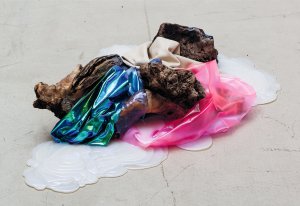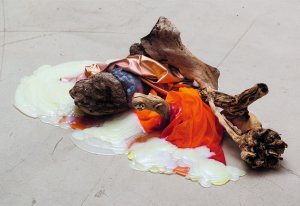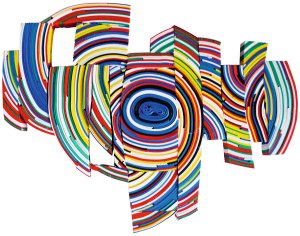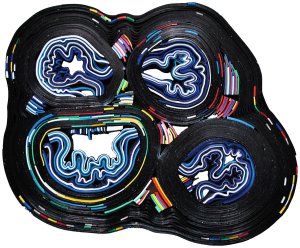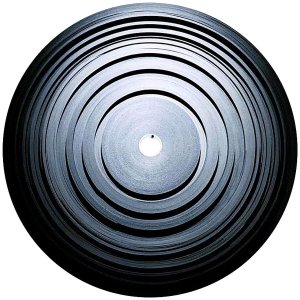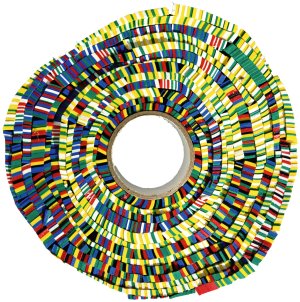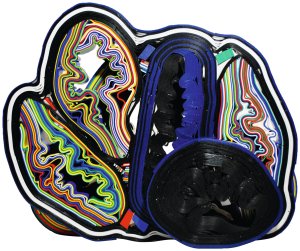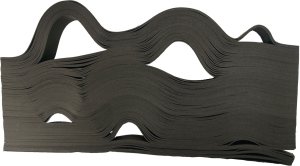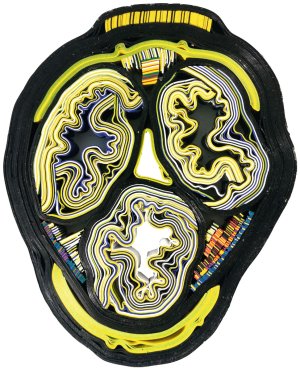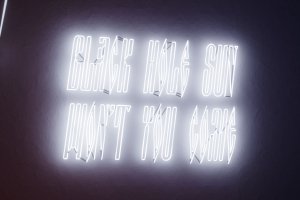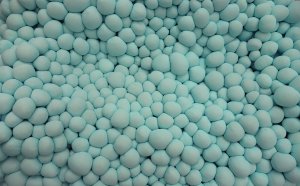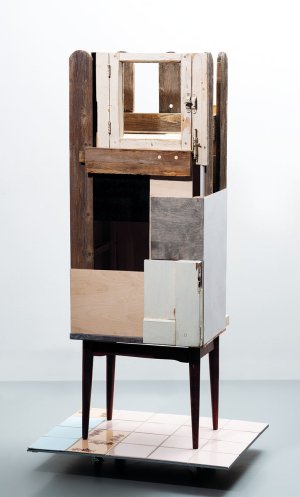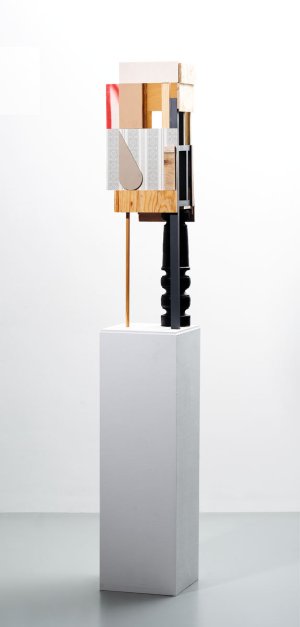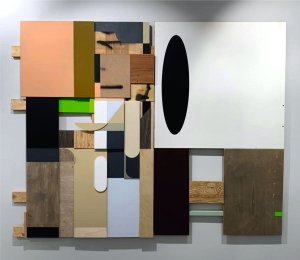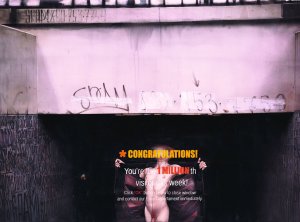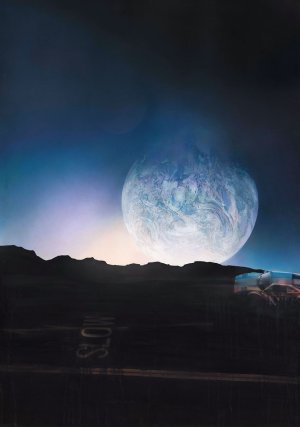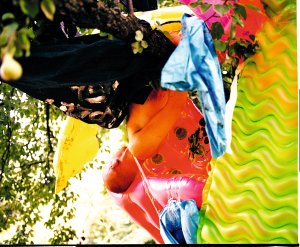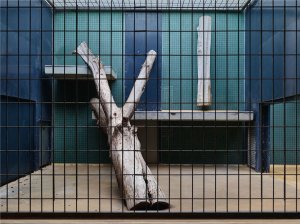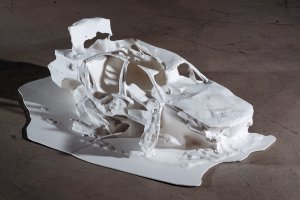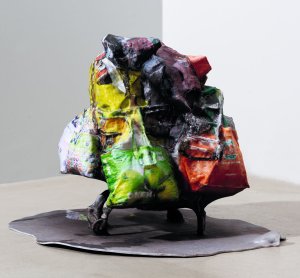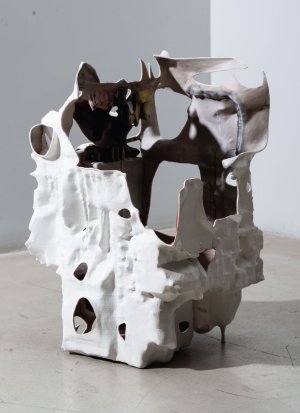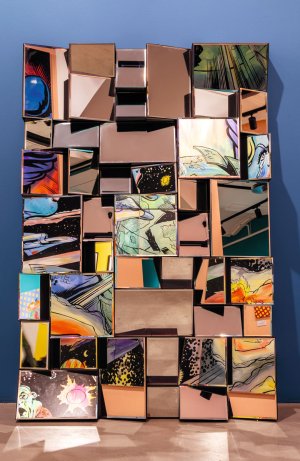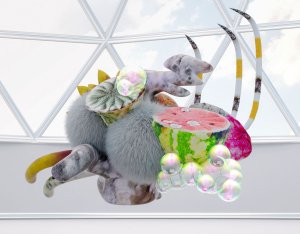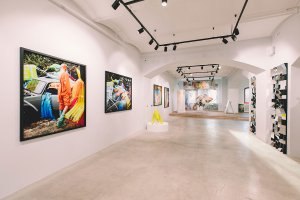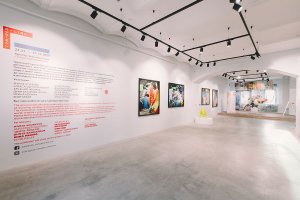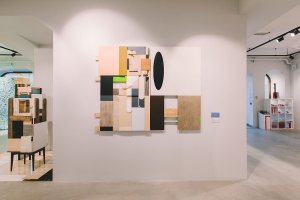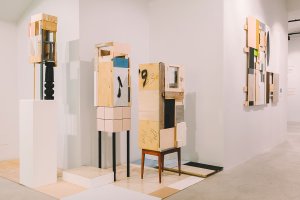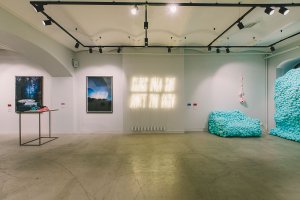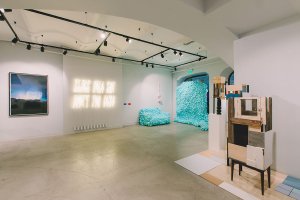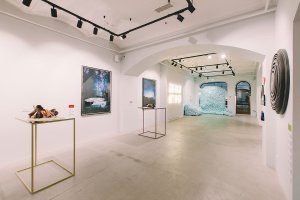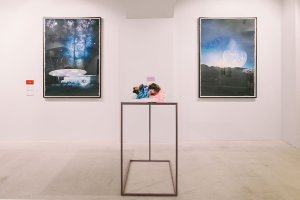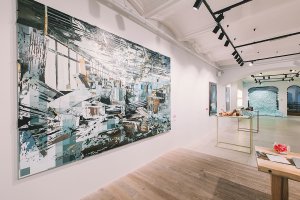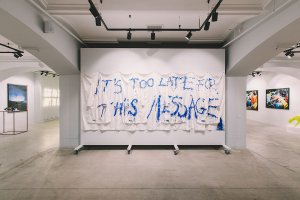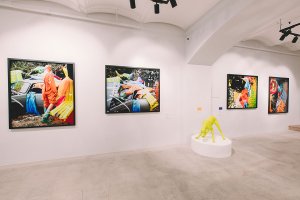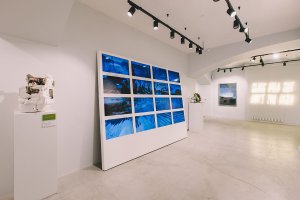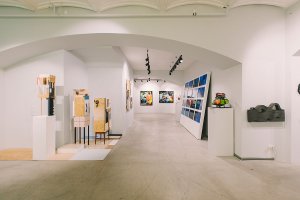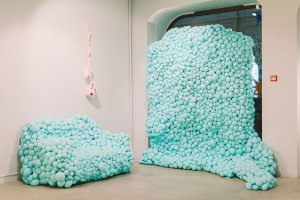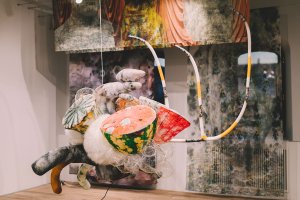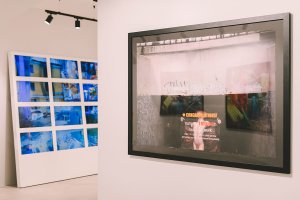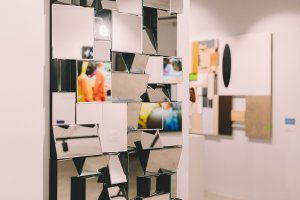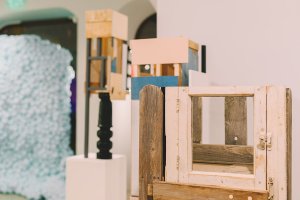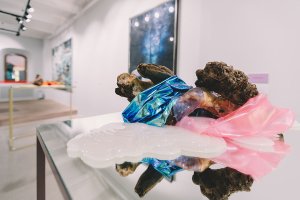Recycle or die The group project Recycle or die unites works in various media by 15 participants and is dedicated to themes of recycling, ecology, overconsumption, and toxic assets. The title of the exhibition is in itself a sort of ultimatum, and, just as the slogan Orthodox Christianity or Death, focuses on two aspects.
First of all – the concept of "ecology" has become an inherent part of the contemporary paradigm, the image of today's world. It holds a wide selection of meanings, ranging from the ecology of the environment, nature, and Planet to the ecology of information and relationships. In essence, ecology is a new set of ethics, the culture that establishes how humanity is to relate to other living beings, the world around it, and information. Nowadays, ecology is striving to become absolute and universal ethics, indifferent to distinctions between social classes, races, nationality, or religion. "Non-ecological" is a synonym of "unethical" in the current context.
That is why people, living in the present, either integrate the new ethics into their values or refuse/oppose the contemporary context. Secondly – the project and the artistic statements within it are not to be treated as serious proclamations by eco-activists. Yet, they do contain an ironic treatment of faith in humanity's limitless abilities to influence and change all. As the well-known stand-up comedian George Carlin noted: "The Planet is fine. The people are fucked." The artworks can be ambivalent in nature, and this is one of the fundamental differences between art and eco-activism.
Visual arts can reference ethical problems, yet they are primarily focused on aesthetics. An artist is often constructing and creating an autonomous subjective world with its own recognizable language, expressive means, and dramatic flourishes.
The photographic series by Sergey Sapozhnikov are a modern epic with a heroic character at its center. The hero, following in the footsteps of Laocoon, is engaged in permanent battle with the artificial landscape of inflatable colored mattresses and various other pieces of trash which, through the lens of a camera, attains the properties of landscapes, curtains, or an interior setting, reminding one of the old paintings.
The main object in the art of Irina Korina is the so-called "new aesthetic" of on objective world without heroes. The author establishes this aesthetic through the use of non-aesthetic cheap common materials – plastic building cladding and artificial colors, asphalt patterns, and mold on inflatable items and drapes.
The meditative movement of the camera through the post-apocalyptic landscapes in the video installations by Aristarkh Chernyshyov almost seem to reference the oeuvres of Tarkovsky and appear to be a modernized version of the pastoral genre, transformed via 3D animations and ambient music. The author does not interfere; he is another outside viewer.
Street artist and architect by education Alexey Luka collects used materials and fractures, using them to create flat and spatial compositions inspired by constructivism and the Russian avant-garde. This ecofriendly technique reflects modernist notions — the source of contemporary art.
Alexander Golynsky creates distinct abstract objects and sculptures from insulation and colored duct tape, as though he is living in a future anti-utopia where all craft stores are closed and artists are only able to utilize long-lasting materials provided by household stores. These isolating materials are an obvious metaphor for the ideas of conserving and protecting the art.
Maria Agureeva primarily deals with sculpture. As she explains, after moving to Los Angeles, where one is more acutely aware of the contact between the human body and nature, she began adding natural materials into polymer objects. Fragments of burned wood that are used in the pieces were collected after the fires that occurred in the national parks of the USA.
Artist Anna Titova titled her polymer sculpture Pavlov's Dog. The figure of the canine is painted in the eco-friendly green color. The piece is presented as the exhibition's totem and sacrificial animal at the same time.
The Superkiosk Bureau acts as the fashion consultant of the project. Fashion is, after all, an important part of contemporary art. The bureau presents ideas of upcycling and recycling in collaboration with Russian designers.
The new piece by Arseny Zhilyaev is a part of Laborer of the Sun — a project dedicated to the study of an imagined future cult which is to be established at the beginning of humanity's expansion in the voids closest to the Milky Way. "The cult is a mixture of various cultures from different periods – from the prehistoric mass culture to the posthistoric hi-tech psychic techniques."
The watercolors by Dmitry Rebus are futuristic in subject matter yet academic in technique and remind one of the psychologically intense cinematic experiences by David Lynch, where one ceases to understand where the line between reality and fantasy is to be drawn.
The art of Maria Sharova and Dmitry Okruzhnov could be referred to as "new landscape art": abandoned factories and libraries disintegrate into pixels, falling apart and coming together over and over again; depending on the distance and view, they appear to be in constant movement between entropy and creation and vice versa.
An ideal accompaniment to the presented visual artworks is seen in the industrial design objects in the style of the 1970s and the pixelated mirror panels by Neal Small, who is known as The Prince of Plastic. The panels have been contributed by the Lamps of 50-60-70s Gallery, which seeks to revitalize the best of industrial design.
The fantastic mythology of Dunya Zakharova is built around a narrative suggested by pagan sources, psychological disorders, and sexual perversions. The artist presents herself as a shaman who is in the process of completing an obscure ritual and is in contact with the forces of nature. A Yakutian invocation to the spirits (algys) during a shamanistic video can be heard in the video.
The choreographic group ZH V YU in their performance Garden is trying to unite with nature: dancers, acting as if they were bacchantes, image themselves as a palm in a greenhouse. One should note that Bacchus (or Dionysus) is a god of all plants, a source of nature's creative forces, inspiration, and religious zeal, as well as the protector of theatre.
The focal point of the exhibition is the installation Twelve Tables by Egor Kraft. The piece is inspired by the Roman Law of the Twelve Tables, a codex of lex publica (5th century BCE). The author presents the viewer with a modern system of laws governing the Internet and personal data protection. The content of these laws is ever-changing and available through private resources for programmers and hackers. A Libertarian altar, a chronicle of digital means for storing and transferring data.
If we playfully approach the exhibition and imagine it as a reflection of a symbolic temple, then we can see the hierarchy of the temple guardians and the movements that unite them, ranging from cosmism to pagan rituals. Welcome to the polytheistic temple of ecology.
Curator: Elena Bakanova
Artists of «Recycle or die»
Maria Agureeva
Alexander Golynsky
Arseny Zhilyaev
Dunya Zakharova (DUZA)
Egor Kraft
Alexey Luka
Dmitry Okruzhnov & Maria Sharova
Dima Rebus
Sergey Sapozhnikov
Anna Titova
Aristarkh Chernyshyov
Lamps of 50–60–70s
Irina Korina
Tigran Avetisyan









